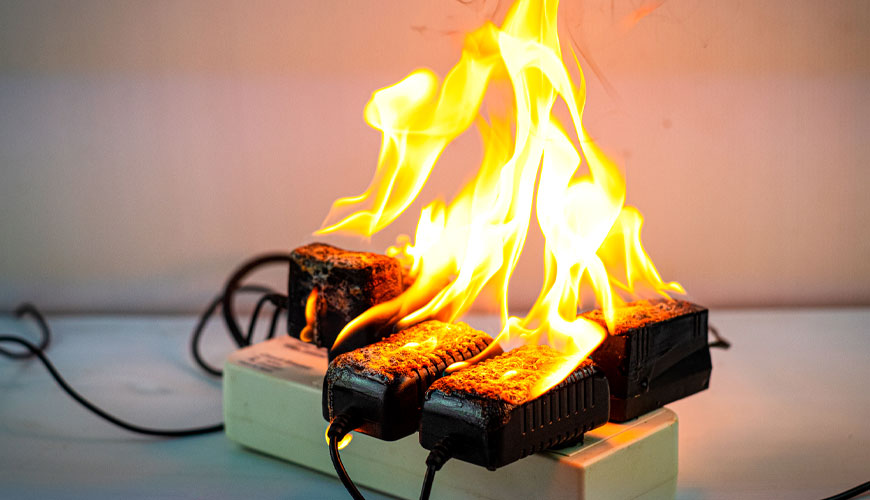

EUROLAB, together with its state-of-the-art accredited laboratories and expert team, provides precise and fast testing services within the scope of IEC EN 60695-1-20 test. This part of IEC EN 60695 provides guidance on the flammability of electrotechnical products and the materials from which they are composed.

It provides guidance on:
One of the responsibilities of a technical committee is to leverage key security publications in the preparation of their publications, where applicable. The requirements, test methods or test conditions of this essential safety publication will not apply unless specifically referred to or included in the relevant publications.
Fires are responsible for creating hazards to life and property as a result of the production of heat (thermal hazard) as well as the production of toxic waste, corrosive waste and smoke (non-thermal hazard). Fires start with ignition and can then grow to flare and in some cases to a fully developed fire. Therefore, ignition resistance is one of the most important parameters of a material to be considered in the assessment of fire hazard. If there is no ignition, there is no fire.
For most materials (except metals and some other elements), ignition takes place in the gas phase. Ignition occurs when flammable vapor mixed with air reaches a temperature high enough for exothermic oxidation reactions to propagate rapidly. Ease of ignition is a function of the chemical nature of the steam, the fuel/air ratio, and temperature.
In the case of liquids, flammable vapor is produced by the evaporation of the liquid, and the evaporation process depends on the temperature and chemical composition of the liquid. In the case of solids, combustible steam is produced by pyrolysis when the temperature of the solid is high enough. The evaporation process depends on the temperature and chemical composition of the solid, as well as the thickness, density, specific heat, and thermal conductivity of the solid.
EUROLAB assists manufacturers with IEC EN 60695-1-20 test compliance. Our test experts, with their professional working mission and principles, provide you, our manufacturers and suppliers, the best service and controlled testing process in our laboratories. Thanks to these services, businesses receive more effective, high-performance and quality testing services and provide safe, fast and uninterrupted service to their customers.
To get an appointment, to get more detailed information or to request an evaluation, you can ask us to fill in our form and reach you.